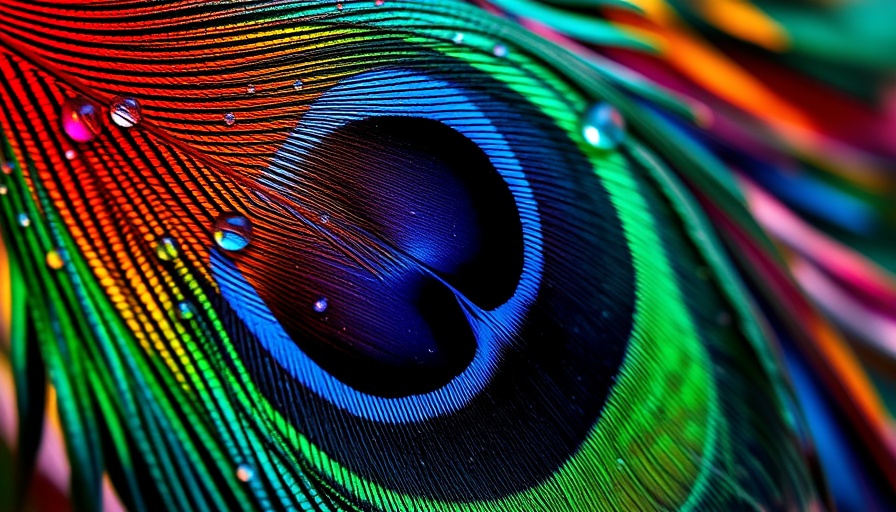
The Fascinating Dual Nature of Peacock Feathers
Peacock feathers are not only admired for their vibrant, iridescent colors but are now recognized for another remarkable trait: they can emit laser light. This groundbreaking finding was reported in the journal Scientific Reports, marking the first known example of a biolaser cavity sourced from the animal kingdom. What makes this discovery particularly intriguing is the underlying science: the beautiful colors we see in feathers are due to their unique structural design rather than pigment, and this same structure enables light emission.
How Photonic Crystals Work in Nature
The phenomenon of laser light production hinges on what physicists call photonic crystals. These structures are made up of periodic nanostructures that can manipulate light. Feather barbules, composed of ordered melanin and keratin, create a sophisticated environment where specific wavelengths of light can be emitted. Unlike pigments, which absorb and reflect light, photonic crystals are tunable; by altering their physical structure, such as the spacing of the barbules, they can change the wavelengths they interact with. This means that the space between the structures plays a crucial role in determining color and the light's behavior.
Potential Applications Beyond Aesthetics
The applications of this research extend beyond the aesthetic appeal of peacock feathers. Understanding how these natural photonic crystals function may lead to technological advancements such as biocompatible lasers. These lasers could have significant implications in medicine, particularly in developing safe, embedded devices for human use. Moreover, insights from this study could inspire the creation of new materials—like iridescent coatings for vehicles and buildings that adapt to light differently, or sophisticated security features in currency to combat counterfeiting.
A Historical Perspective on Biolaser Emissions
Previous explorations into biolaser emissions have revealed similar capabilities in various biological specimens, such as insect wings and coral. Many prior studies have hinted at this phenomenon, where random laser emissions were observed in materials from nature. The recent focus on peacock feathers, however, emphasizes the need for deeper understanding of how these unique structures can be engineered or replicated. Scientists are motivated to pinpoint the exact mechanism behind laser emissions in feathers, which may unlock new avenues for research and application.
Challenges in Expanding This Research
Though the prospects of embedding laser technology into living tissues is an exciting frontier, challenges remain. The intricate processes required to manipulate and replicate these structures safely in humans necessitate extensive research. Additionally, ensuring that these innovations are biocompatible is essential to their success. As scientists delve into this field, they must keep safety and efficacy at the forefront of their research initiatives.
Final Thoughts: The Beauty of Nature as Inspiration
This fascinating interplay of beauty and functionality in peacock feather lasers reflects humanity's long-standing quest to learn from nature. By seeking inspiration from biological systems, researchers hope to bridge the gap between natural elegance and technological innovation. Observing how peacock feathers emit light not only captivates the imagination but also paves the way for remarkable advancements. As we look to the future, it’s clear that the marriage of natural structures and modern technology promises benefits we can only begin to imagine.
 Add Row
Add Row  Add
Add 




Write A Comment